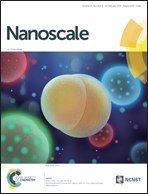Nonspecific luminometric assay for monitoring protein adsorption efficiency and coverage on nanoparticles†
Abstract
Nonspecific assays utilizing time-resolved luminescence resonance energy transfer (TR-LRET) are developed for two applications: to monitor protein adsorption efficiency and to assess the degree of surface coverage on the solid phase. We successfully measure the adsorption efficiency of non-sedimenting nanoparticles since this has been notoriously difficult to determine. Monitoring of the protein adsorption on nanoparticles does not require the nanoparticles with the adsorbed protein to be washed and it is based on the competitive adsorption between the non-adsorbed analyte protein and the acceptor-labeled protein to donor europium(III) polystyrene nanoparticles. The application for assessing the degree of surface coverage is performed with the final coated and washed analyte nanoparticles and it requires no fluorescent labeling of the studied protein. This application utilizes the competitive adsorption of the acceptor-labeled protein on analyte nanoparticles partly covered with protein and donor europium(III) polystyrene nanoparticles. The developed methods detect either non-adsorbed protein or uncovered nanoparticle surface, not the proteins adsorbed on the nanoparticles. This is not achievable with the traditional total protein quantification assays applied for monitoring protein adsorption since both non-adsorbed and adsorbed protein are detected and their separation is required. Thus, the developed application for monitoring protein adsorption is user-friendly, requires no centrifugal instrumentation, and is applicable also for small nanoparticles requiring ultracentrifugation. No special expertise or investment in costly instruments is required compared to the existing methods, such as spectroscopic techniques, isothermal titration calorimetry, and surface plasmon resonance. The application for assessing the degree of surface coverage is compared to a reference literature method that comprised the analysis of adsorbed fluorescently labeled protein. The saturation reached at similar protein concentrations showing the reliability of the assay. Our results suggest that the developed applications could be exploited as rapid tools for protein adsorption studies on nanoparticles and for quality control and characterization of the coating processes.



 Please wait while we load your content...
Please wait while we load your content...